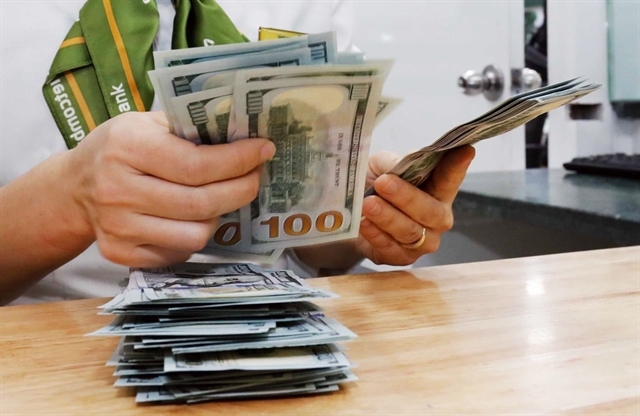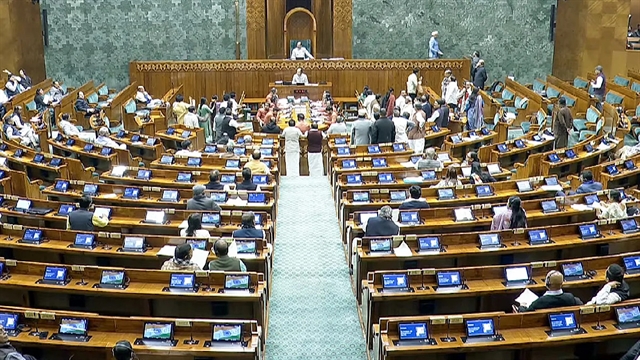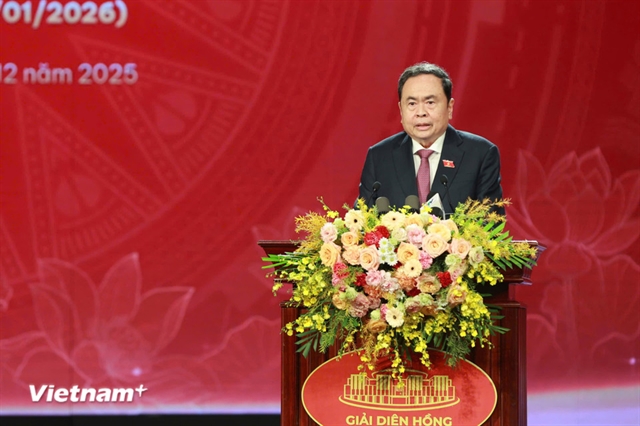 Economy
Economy

 |
| A Vietcombank employee counts US dollars. Though the foreign exchange rate is seeing reduced pressure, the SBV will continue to issue bills to control the exchange rate. VNA/VNS Photo |
HÀ NỘI — The State Bank of Vietnam (SBV) has reduced the interest rate on bills for the first time in 2025.
According to data from the financial data provider Wichart, the SBV issued VNĐ19.6 trillion of bills in the past week. The interest rate on the bills decreased by 0.1 percentage point, from 4 per cent to 3.9 per cent on February 14.
In the interbank market, overnight interest rates have also decreased from 5.54 per cent to 4.25 per cent, and interest rates for terms from one week to one month have also declined to 4.45 per cent and 4.67 per cent, respectively.
According to experts, though the pressure on foreign exchange rate is lowering, the SBV will continue to issue bills as needed to control the exchange rate as long as the risk of a rising rate persists.
To cool down the exchange rate, the SBV can also take measures to keep interbank interest rates at a high threshold to ensure the interest rate gap between the Vietnamese đồng and the US dollar in the future.
The USD/VNĐ exchange rate has gradually decreased since January. On the interbank market, the US dollar was traded at VNĐ25,085 on January 24, 2024 (the last working day of January before the country started the Lunar New Year holiday), a decrease of 1.6 per cent compared to the end of 2024.
Some factors that helped the exchange rate cool down include the SBV’s sale of US dollars under forward contracts, a decrease in the dollar index (DXY) and the country’s rising foreign currency supply from remittance sources.
Commenting on the exchange rate, Viet Capital Securities Company (VCSC) analysts forecast a number of factors that may put pressure on the USD/VNĐ exchange rate this month. First, abundant liquidity in the banking system can reduce interbank interest rates and put pressure on the exchange rate. Secondly, the SBV on February 11 increased the dollar selling rate by 1 per cent to VNĐ25,698 from VNĐ25,450 per dollar. Finally, demand for US dollars from the State Treasury has increased, as it has to pay for dollar-denominated bonds.
However, VCSC analysts believe that rising foreign currency supply from FDI, remittances and trade surplus can help support the USD/VNĐ exchange rate.
Tiền Phong Securities (TPS) forecasts that the USD/VNĐ exchange rate will continue to see increasing pressure this year and may reach VNĐ26,000 per dollar by the end of the year, especially as the US Federal Reserve slows its interest rate cuts. Meanwhile the stronger dollar may reduce the attractiveness of the Vietnamese market for international investors.
However, TPS experts noted that based on the Government's strong economic growth orientation this year and the world’s unstable political and trade situation, the scenario in which the USD/VNĐ exchange rate is limited to VNĐ26,000 per dollar can be seen as positive. — BIZHUB/VNS

.jpg)


